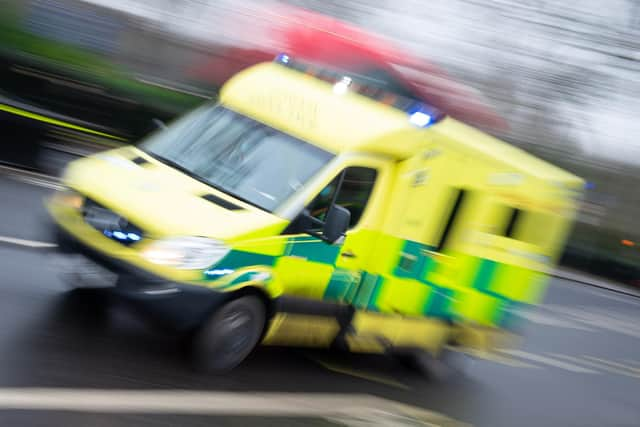999 caller in Hertfordshire told they face wait of up to 14 hours for an ambulance
and live on Freeview channel 276
Callers seeking an emergency 999 ambulance response in Hertfordshire have been told they could face waits of up to 14 hours, it has emerged.
The shocking 'predicted response time' was reported to a meeting of the county's Health and Wellbeing Board on Wednesday (March 16), in response to a question from physics teacher Clare Byrne.
Advertisement
Advertisement
Clare had wanted to highlight the issue following a recent incident in which a fellow member of Bricket Wood choir fell after a rehearsal - and was told it could take 10 hours for an ambulance to reach her.


In practice, says Clare, the ambulance arrived at around the three-hour mark and the woman was taken to hospital for treatment.
But it was only when she raised the issue at the meeting, that she found that at least one patient had been warned they may have to wait even longer.
In response to the question Beverley Flowers, from the Hertfordshire and West Essex Integrated Care System, reported that in the past year the East of England Ambulance Service (EEAST) had predicted waits of up to 14 hours.
Advertisement
Advertisement
But she stressed that these predictions were always dependent on the level of clinical need.
She also pointed to data that showed that - on average - 'life threatening' C1 calls were actually responded to within eight minutes and 39 seconds.
And she said that in nine out of 10 occasions crews had arrived within 15 minutes and 29 seconds.
For C2 calls - classed as 'serious incidents' - she said the average response time was 37 minutes and 19 seconds - with nine out of 10 arrivals within 80 minutes and 54 seconds.
Advertisement
Advertisement
C3 calls are still classed as 'urgent', but the data presented to the board shows the average response time was 103 minutes and three seconds.
And 'less urgent' C4 calls took longer - with an average response time of 147 minutes and 56 seconds and with nine out of 10 responses arriving within 383 minutes and 12 seconds, which is in excess of six hours.
According to the East of England Ambulance Trust (EEAST) every patient is triaged according to clinical need - with life-threatening emergencies prioritised.
And following the meeting a spokesperson for the EEAST told the Local Democracy Reporting Service they were working with others to reduce delays when possible.
Advertisement
Advertisement
"Demand for our service remains very high, and staff sickness and handover delays at hospitals are also having an impact on our ability to reach patients as quickly as we would like," said the spokesperson for EEAST.
“We’re continuing to work closely with our healthcare partners to keep patients safe and reduce delays wherever we can.
“The public can help us to get to the most urgent cases by using NHS 111 service for healthcare advice in non-urgent cases. Please continue to call 999 if it’s a life-threatening emergency.”
The Trust is already working with hospitals to reduce handover delays - which impact on response times.
And that work has included the development of 'cohorting' areas in hospitals where patients can be assessed - enabling ambulances to get back on the road.
